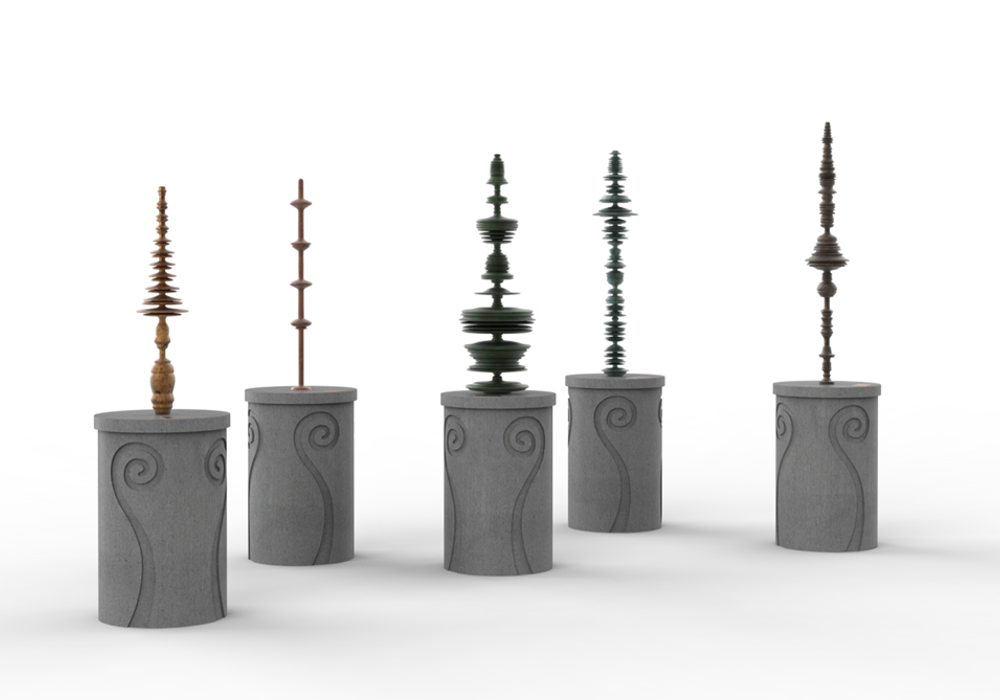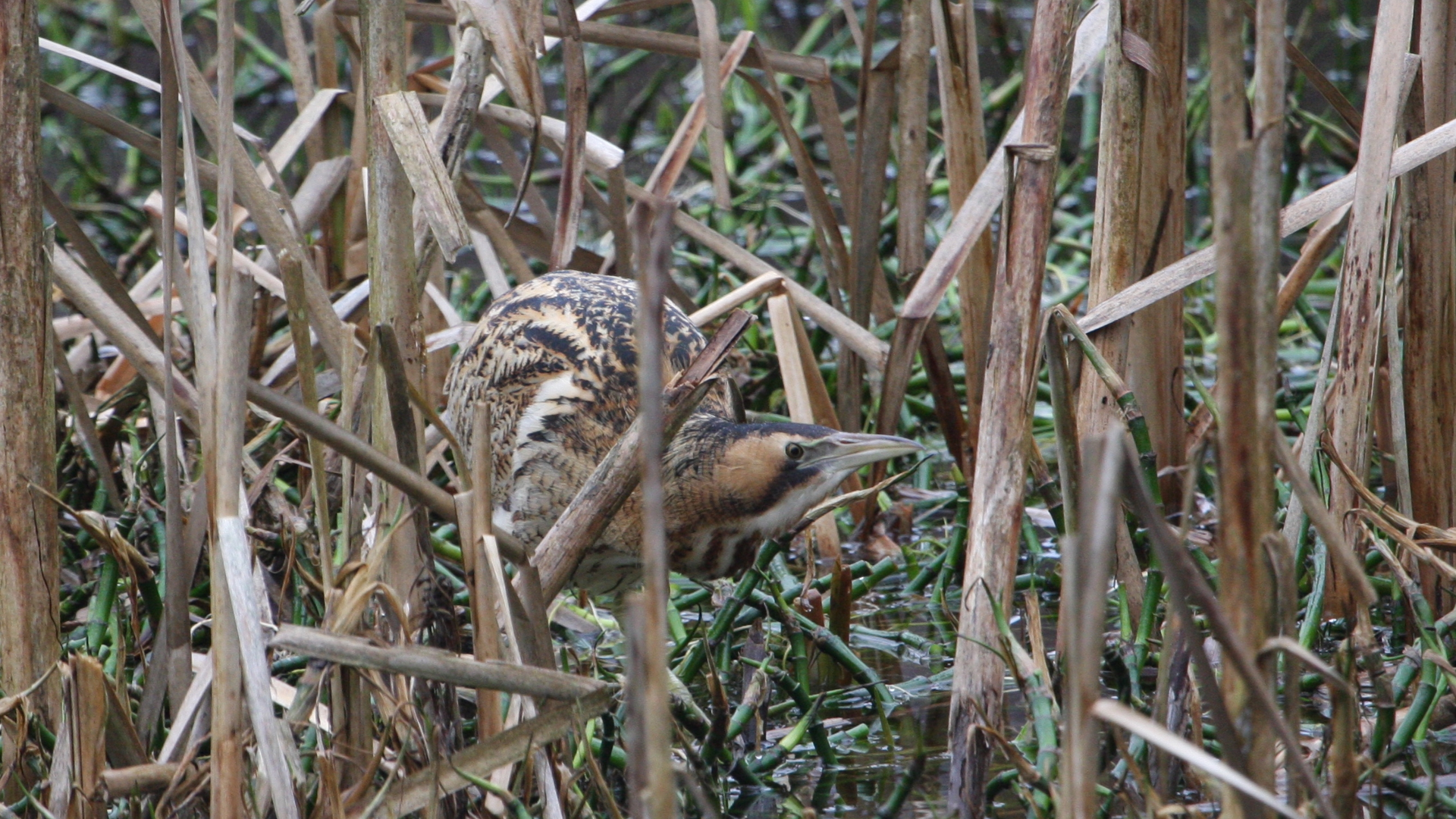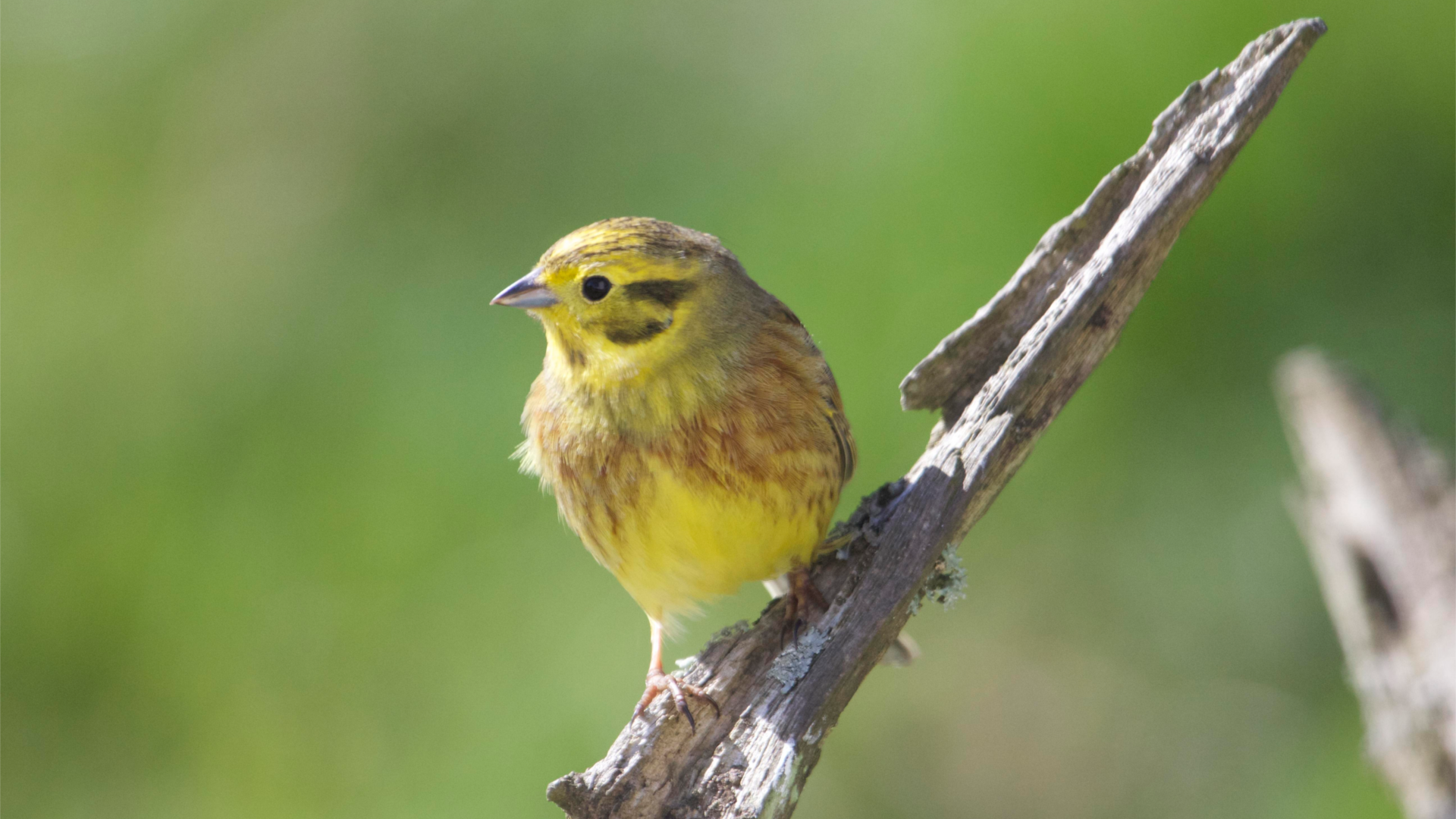A shy and rather mysterious bird of our marshes and especially reedbeds. Rarely emerging from dense waterside vegetation, it is wonderfully camouflaged with golden brown feathers that are mottled with black marks. The Bittern moves sedately and freezes if alarmed, stretching neck upwards to look even more like the reeds in which it lives. Often it is only the booming call that betrays its presence.
Song
Hunched deep within his reedbed home, the male Bittern, a streaky, stripy brown heron, starts his mating call by swallowing four or five deep gulps of air. This gives him the belching power he needs to emit a short run of low, resonant booming notes, a second or so apart, said to be the lowest birdsound in the world – “ha-RUMPH haRUMPH haRUMPH.”
It is a sound that you seem to feel as much as hear; some liken it to blowing across the top of a very large bottle. With each boom, his body visibly inflates and deflates like bagpipes. Each male has his own unique boom that seasoned listeners can tell apart, and the sound can travel well over a mile and often continues deep into the night.


Conservation
The Bittern has had a chequered history in lowland England. Once so common that it was frequently caught as food by rural fenland communities. Drainage of fens and marshes for agriculture and persecution resulted in its decline until it became extinct in Britain by 1885. However, in the early 20th century it recolonized East Anglia and numbers peaked in the 1950s but then declined again until there were only 11 birds in 1997. Determined conservation, including planting new reedbeds, turned round its fortunes and there are now 200 pairs or more, mainly in Norfolk, Suffolk and Lancashire.
Waterton
Waterton was aware of the decline of the Bittern. The species was only a rare vagrant to the Wakefield area. In 1865 he was infuriated by a neighbouring landowner shooting a Bittern. He writes, “My neighbour alas! has killed the only Bittern that has been seen here for seventy five years. What a world we live in…”
A Sculpture from The Auguries (Last Calls)
Andy Holden was inspired by the fact that the world’s first recognised nature reserve was founded in the Wakefield Disctrict by Charles Waterton at Walton Hall in 1826. Waterton also invented the ‘hide’ for observing birds. Andy has a special interest in birds and often works with his father, Peter. Peter Holden formerly worked for the Royal Society for the Protection of Birds and created the annual Big Garden Birdwatch.




